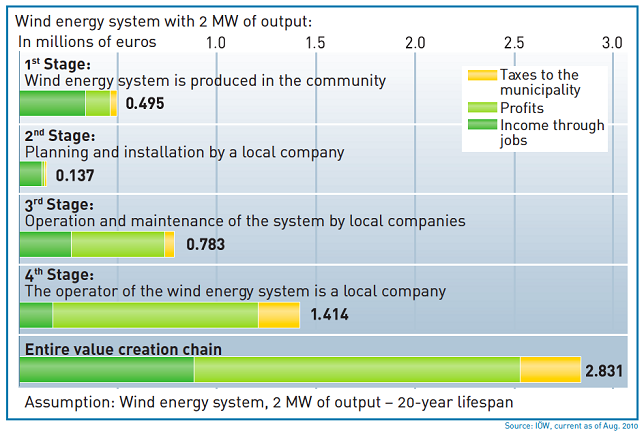Why Local Ownership Of Renewable Energy Projects Matters In One Simple Chart

Above: local ownership of a wind project in Germany accounts for half of the total economic value to a community.
I’ve always been a big believer that local ownership is one of the most important drivers of renewable energy development. There’s a reason why these technologies took off so quickly in Germany and Denmark: Much of the development was owned by farmers or communities.
Here in the U.S., opposition to wind farms and other large-scale renewable energy projects often comes from distrust of outside companies. When people perceive — rightly or wrongly — that developers are in their communities only to make a quick buck by putting industrial projects on their land, backlash ensues. And when people don’t trust the process, they’re more likely to believe claims from opponents about wind turbine syndrome, predictions of collapse in property values, and charges about corporate land grabs.
How do you combat this? Keeping development local is one of the most effective methods. And the chart above, taken from a German study on the value of localized projects, shows why. (Hat tip to John Farrell for digging it up). Notice the fourth bar in the graph. Keeping the ownership of a wind farm local accounts for half of the total economic impact over the lifetime of the project.
We often think of manufacturing as the biggest economic booster. But, according to the German study, manufacturing the materials doesn’t even provide half the value of local project ownership.
That is a very powerful indicator.
You can return to the main Market News page, or press the Back button on your browser.

